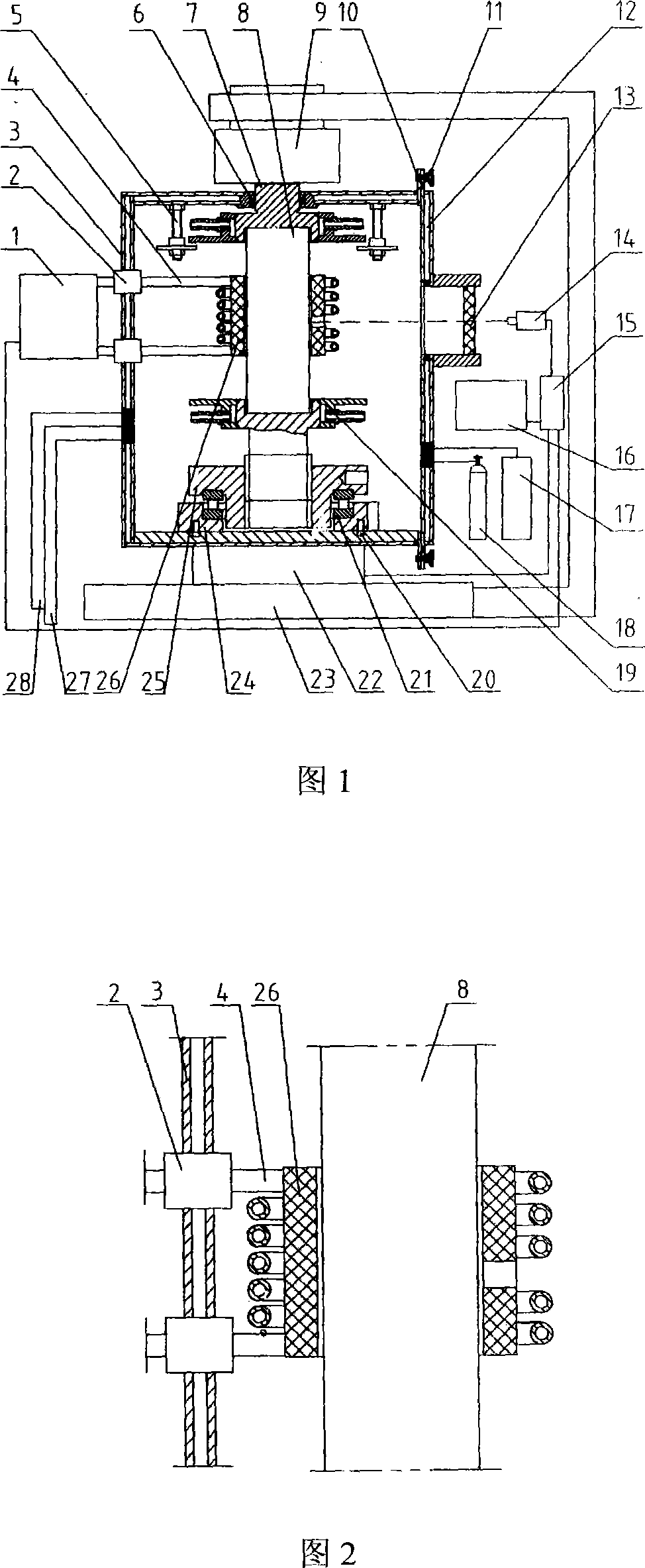Measuring equipment of non-metallic material high-temperature expansive power and method of use thereof
A technology of non-metallic materials and high-temperature expansion, which is applied in the field of non-metallic material performance measurement devices, can solve the problems of slow heating rate, high price, and inoperable equipment, and achieve the effects of high operating temperature, less maintenance, and simple structure
- Summary
- Abstract
- Description
- Claims
- Application Information
AI Technical Summary
Problems solved by technology
Method used
Image
Examples
Embodiment 1
[0022] A device for measuring the expansion force of non-metallic materials, the device includes a water-cooled high-temperature sealed chamber, a temperature control system, a force-measuring device, a vacuum device and an air source. Its specific structure is shown in Figure 1:
[0023] The structure of the water-cooled high-temperature sealed chamber is: a metal water-cooled base 24 is fixed at the center of the bottom of the water-cooled sealed chamber 3, a plane bearing 21 is concentrically installed on the inner platform of the metal water-cooled base 24, and the raised part of the adjusting nut 25 is concentrically fitted into the plane In the bearing 21, the lower end of the metal water-cooled lower support 19 is threadedly connected with the adjusting nut 25, the sample 8 to be tested for high temperature expansion force is placed on the metal water-cooled lower support 19, and the lower end of the water-cooled pressure head 7 is pressed against the sample to be tested...
Embodiment 2
[0032] A device for measuring expansion force of non-metallic materials and its application method, the device includes a water-cooled high-temperature sealed chamber, a temperature control system, a force measuring device, a vacuum device and an air source. Its specific structure is as shown in Figure 1 and described in Embodiment 1.
[0033] The material of sample 8 to be tested is magnesia carbon brick, and the size is a cylinder of φ50mm×160mm. The gap between the cylinder and the inner wall of graphite ring 26 is 2-4 mm; the gap between graphite ring 26 and induction coil 4 is 2-4 mm. 5mm.
[0034] The method for measuring the high-temperature expansion force of magnesia-carbon bricks is: before heating up, adjust the contact pressure between the upper movable indenter 9, the water-cooled indenter 7 and the sample 8 to be tested, and apply a pre-pressure of 25KN to the magnesia-carbon bricks; The sealed chamber 3 is evacuated and filled with N 2 , heat up to the set 160...
PUM
 Login to View More
Login to View More Abstract
Description
Claims
Application Information
 Login to View More
Login to View More - R&D
- Intellectual Property
- Life Sciences
- Materials
- Tech Scout
- Unparalleled Data Quality
- Higher Quality Content
- 60% Fewer Hallucinations
Browse by: Latest US Patents, China's latest patents, Technical Efficacy Thesaurus, Application Domain, Technology Topic, Popular Technical Reports.
© 2025 PatSnap. All rights reserved.Legal|Privacy policy|Modern Slavery Act Transparency Statement|Sitemap|About US| Contact US: help@patsnap.com

